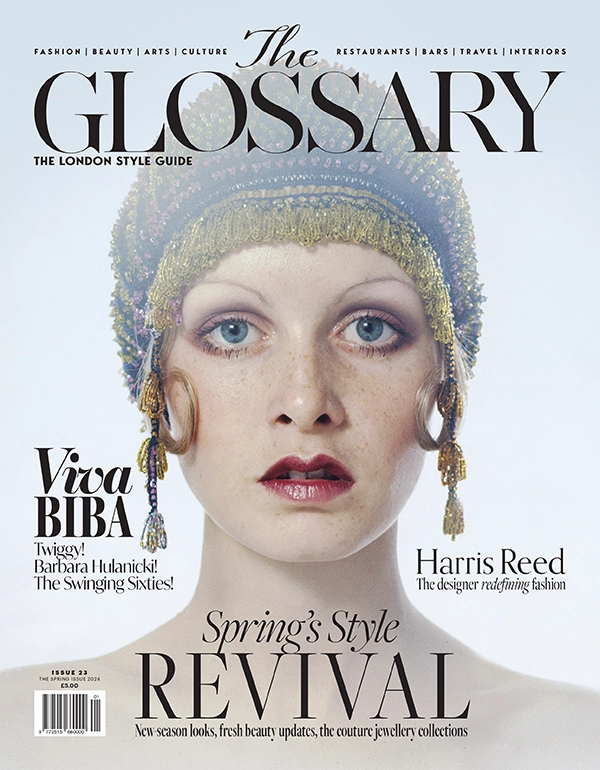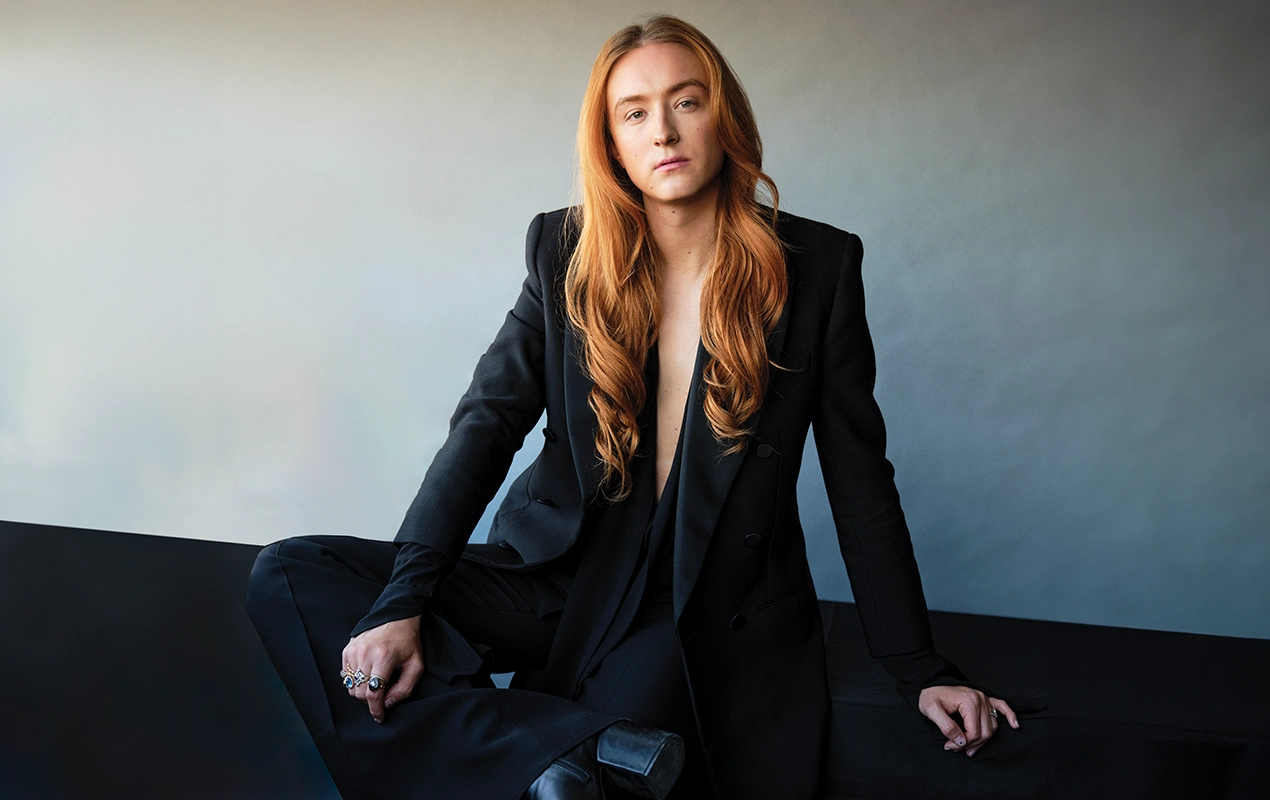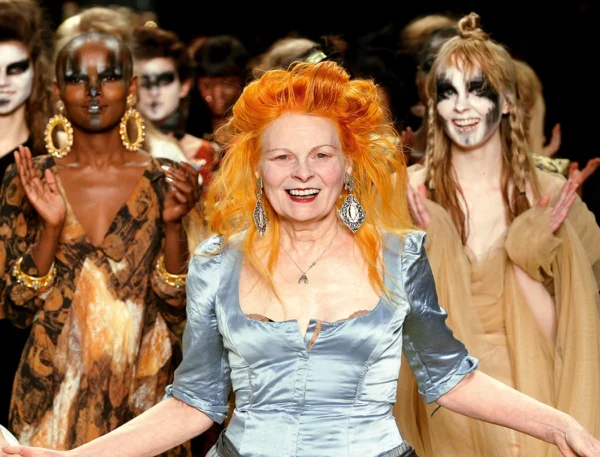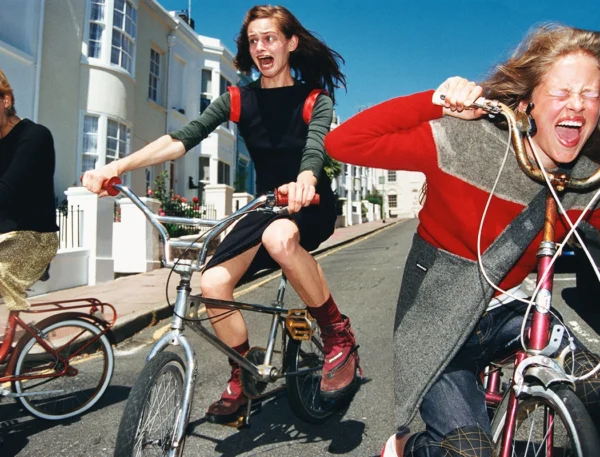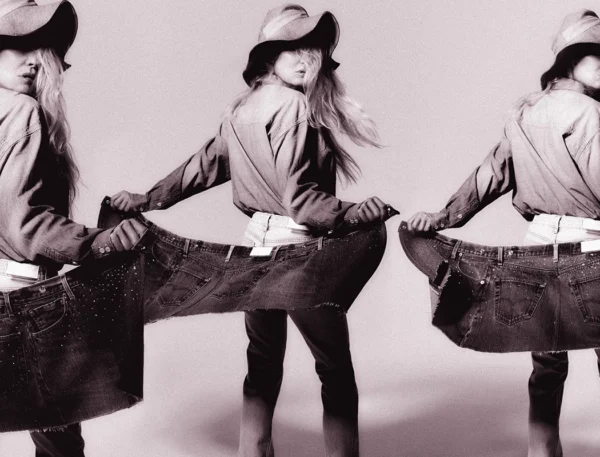When Harris Reed first emerged on the fashion scene, he all but turned it on its head. Best known for his designs that challenge gender norms and ideas of masculinity, his show-stopping demi-couture gowns have been worn by everyone from Beyoncé, Adele and Selena Gomez to Harry Styles and Lil Nas X. Here, in an exclusive interview with The Glossary, Reed shares his thoughts on the power of clothing, the difficulties of the fashion industry and challenging the status quo.
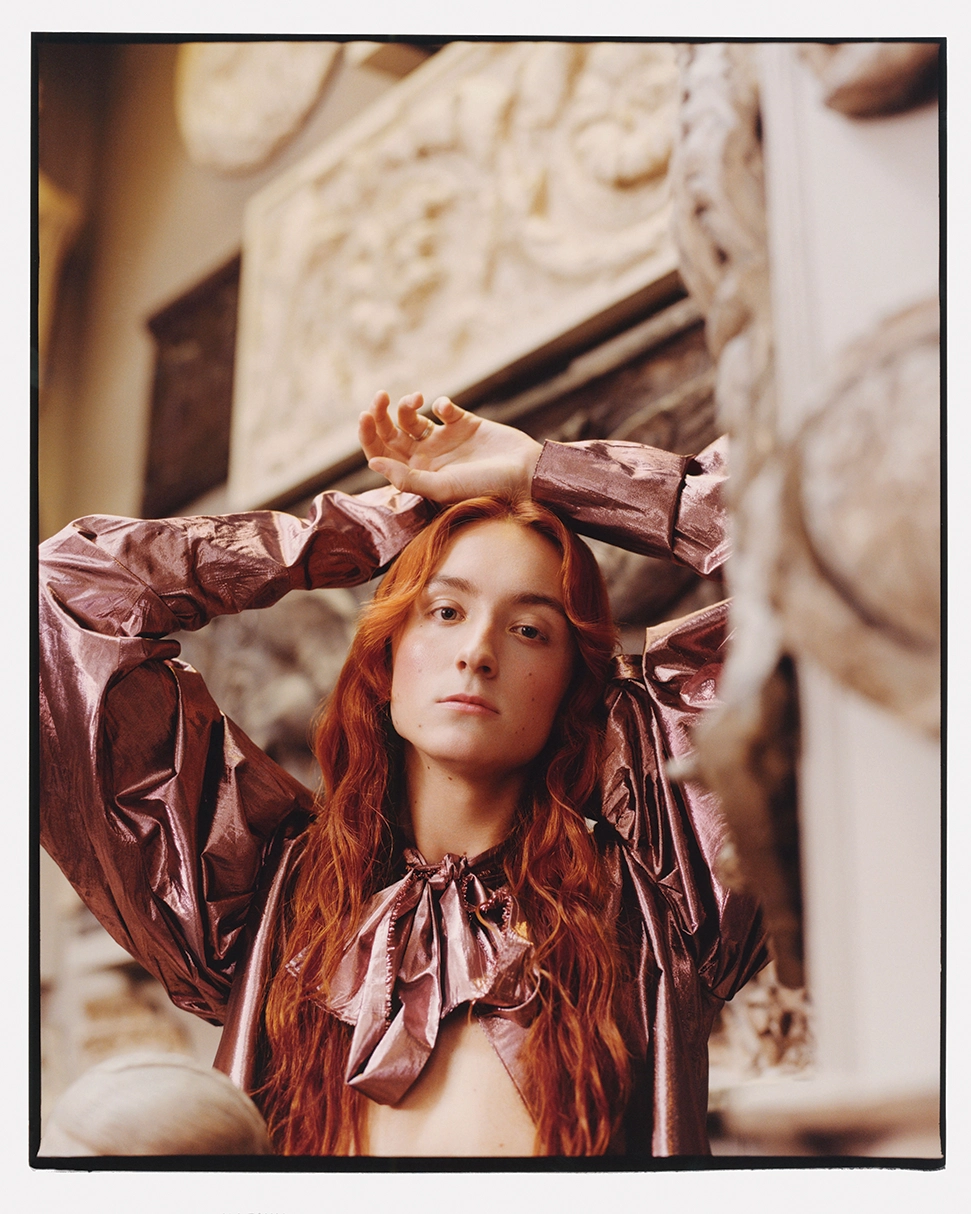 Pin
Pin Attending a Harris Reed show has become something of a sacred pilgrimage for fashion editors. Each season we wait in suspense, ready to be led down into the depths of the dream-like ‘Reed’ universe. “This is like the Oscars,” an editor once whispered to me during a runway, and it very much is. The only thing you can expect from Harris Reed is the unexpected.
You may find yourself surrounded by incredible sculptures at the Tate Modern, being quoted Shakespeare by actress Florence Pugh dressed in a harlequin gown of black and gold. Or perhaps you’ll be within the hallowed walls of Westminster’s St John’s Smith Square and discover you are placed beside singer Sam Smith, as they serenade you and the room dressed in one of Reed’s Elizabethan-style ruffled shirts. And just when you think Reed’s shows cannot possibly be more dramatic, you begin to look at the clothing itself.
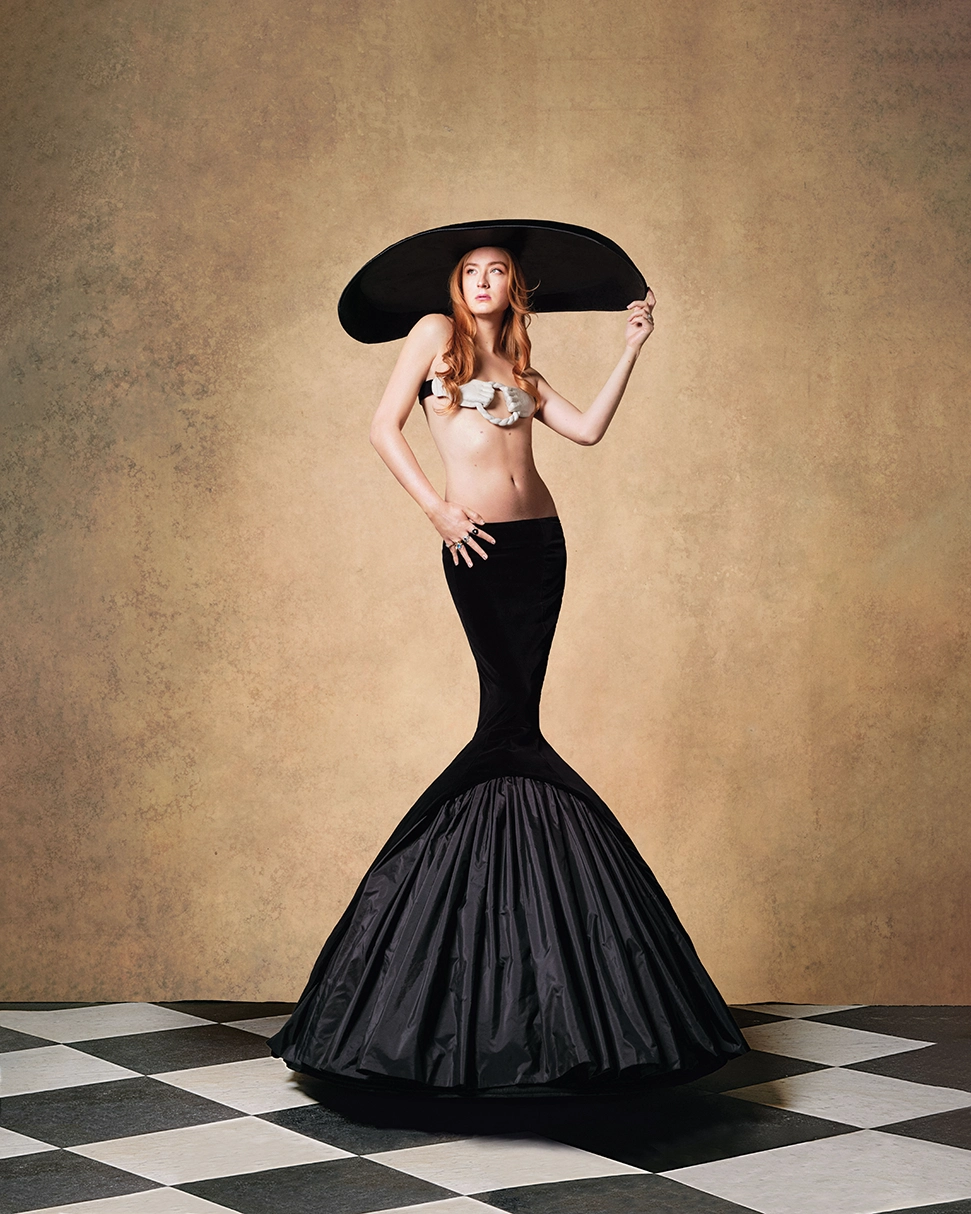 Pin
Pin Harris Reed ‘demi-couture’ bends all rules of gender and conformity. For his critically acclaimed AW22 collection, 60 Years a Queen, dresses were made molten, melting off shoulders, torso and arms. Bodices were cut to controversially uncover the bust revealing rib cages, and high-waisted trousers became skirt hybrids, framed by gigantic ringed feathered hoops.
His silhouettes are bold. “Clothing has power,” Reed tells me in an exclusive interview with The Glossary. “When it’s done right, it allows us to be our most expressive selves, to venture into slightly uncomfortable spaces and places within ourselves that we’re sometimes scared of.”
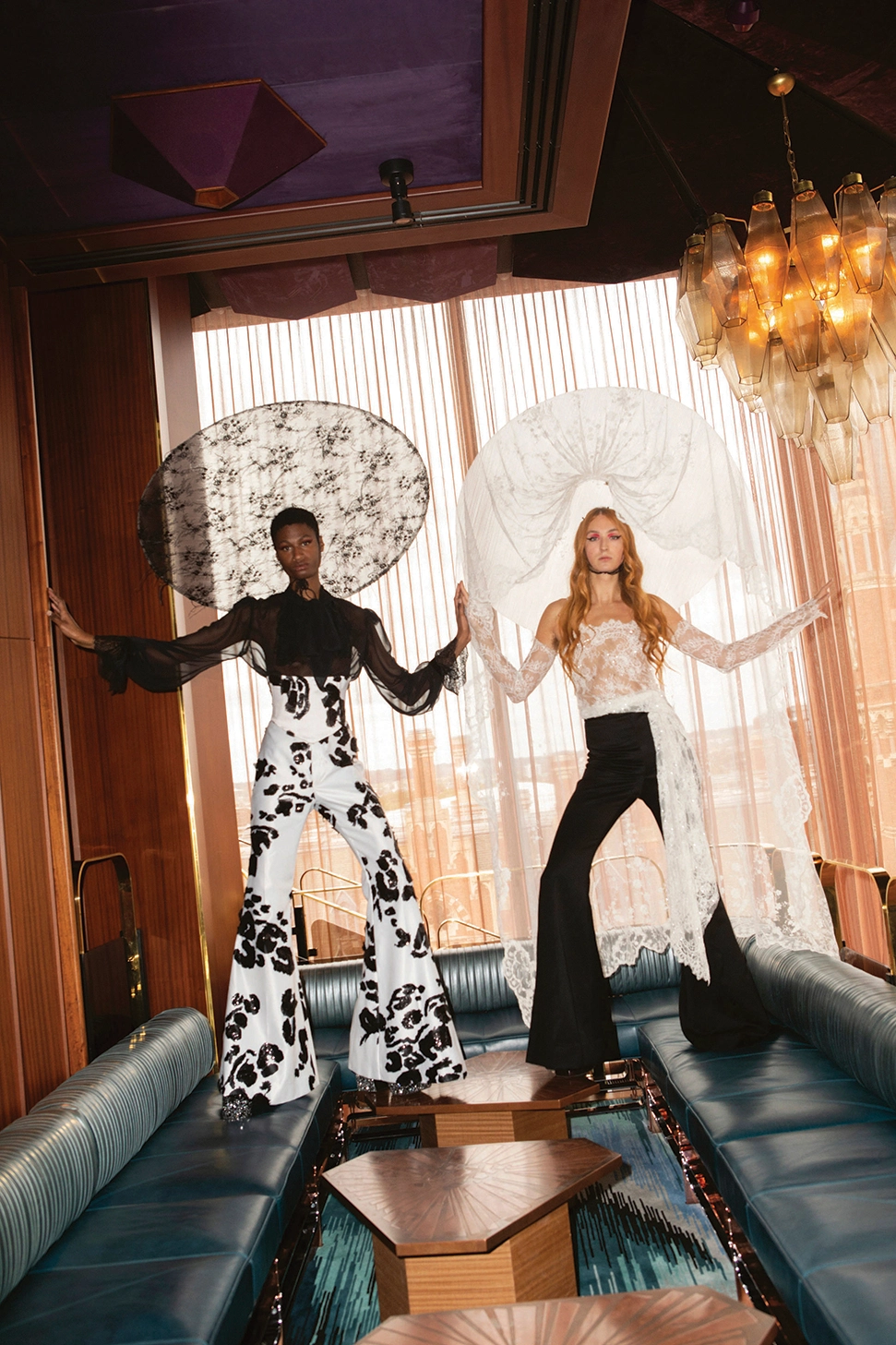 Pin
Pin His most recent AW24 collection, staged at Tate Britain, was a playful ten-piece salon-style show laced with Victoriana – with a surprising sustainable twist. Reed’s heavenly sculptural eveningwear looked to be made of heavy brocade but on closer inspection the fabric was, in fact, wallpaper – archive scraps from British hand-painted wall-covering specialist Fromental, chiming with Reed’s inspiration: paper dolls. “It’s moving art,” he said backstage.
Reed and the worlds he expertly weaves are distinctly hard to place and to define, and that’s exactly how Reed likes it. “I just don’t think you should put anyone in a box,” he tells me. And you would be hard pressed to do so, as Reed wears many hats.
At the age of 27 he is the founder and creative director of his own successful eponymous label and the creative director of luxury French maison Nina Ricci (its youngest in history). This incredible success, which takes other designers decades to achieve, took Reed a few years.
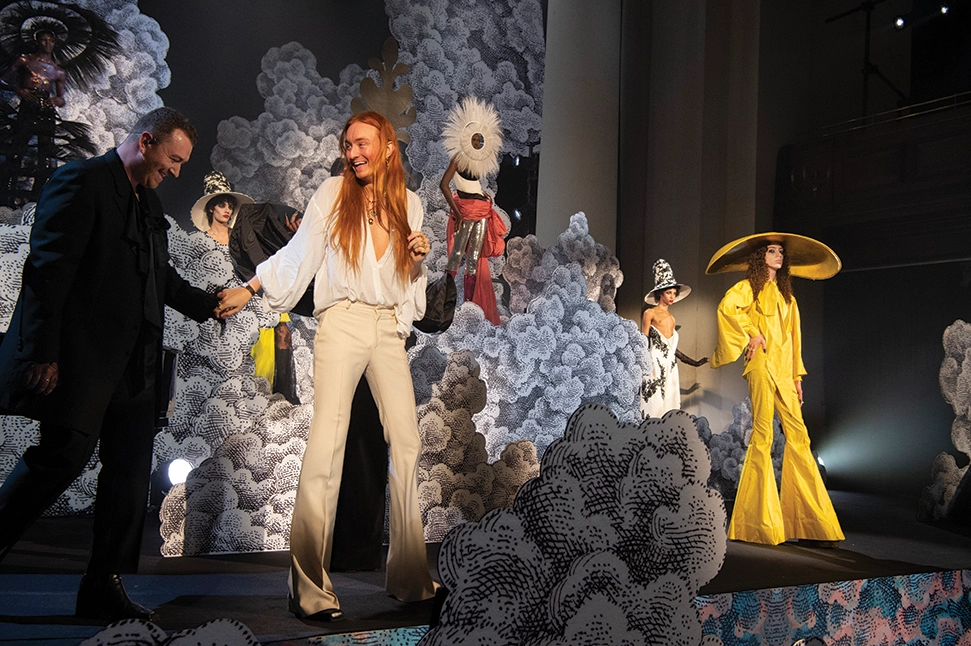 Pin
Pin His journey has been well documented. While studying fashion at Central Saint Martins, he received an Instagram DM from stylist Harry Lambert in 2017. Lambert asked Reed for a custom look to dress Harry Styles. The look went viral and the next day Reed woke up to hundreds upon thousands of social media followers; not long afterwards, Reed was spotted by Alessandro Michele at Gucci and invited to do the highly coveted apprenticeship programme at the Italian house. All while still a student. After graduating in 2020, he debuted his first collection in February 2021, which opened the first gender neutral London Fashion Week.
Harris Reed
Today, Reed’s clothing is beloved by the likes of Styles, Adele, Beyoncé, Selena Gomez, Emma Corrin and Lil Nas X. He has dressed celebrities for the Met Gala (his tiered-gilded-feathered look for Iman in 2021 stole the show) and even has his work displayed as part of the Victoria & Albert Museum’s permanent collection.
He’s collaborated with jewellery brand Missoma and cosmetics brand MAC, as well as Lexus and, last year, was announced as brand ambassador for Dyson (Reed debuted its latest product during his AW24 show). It’s collaborations like these which enable him to host the extravagant runway shows that have captured the hearts and minds of editors, buyers and creatives across the world.
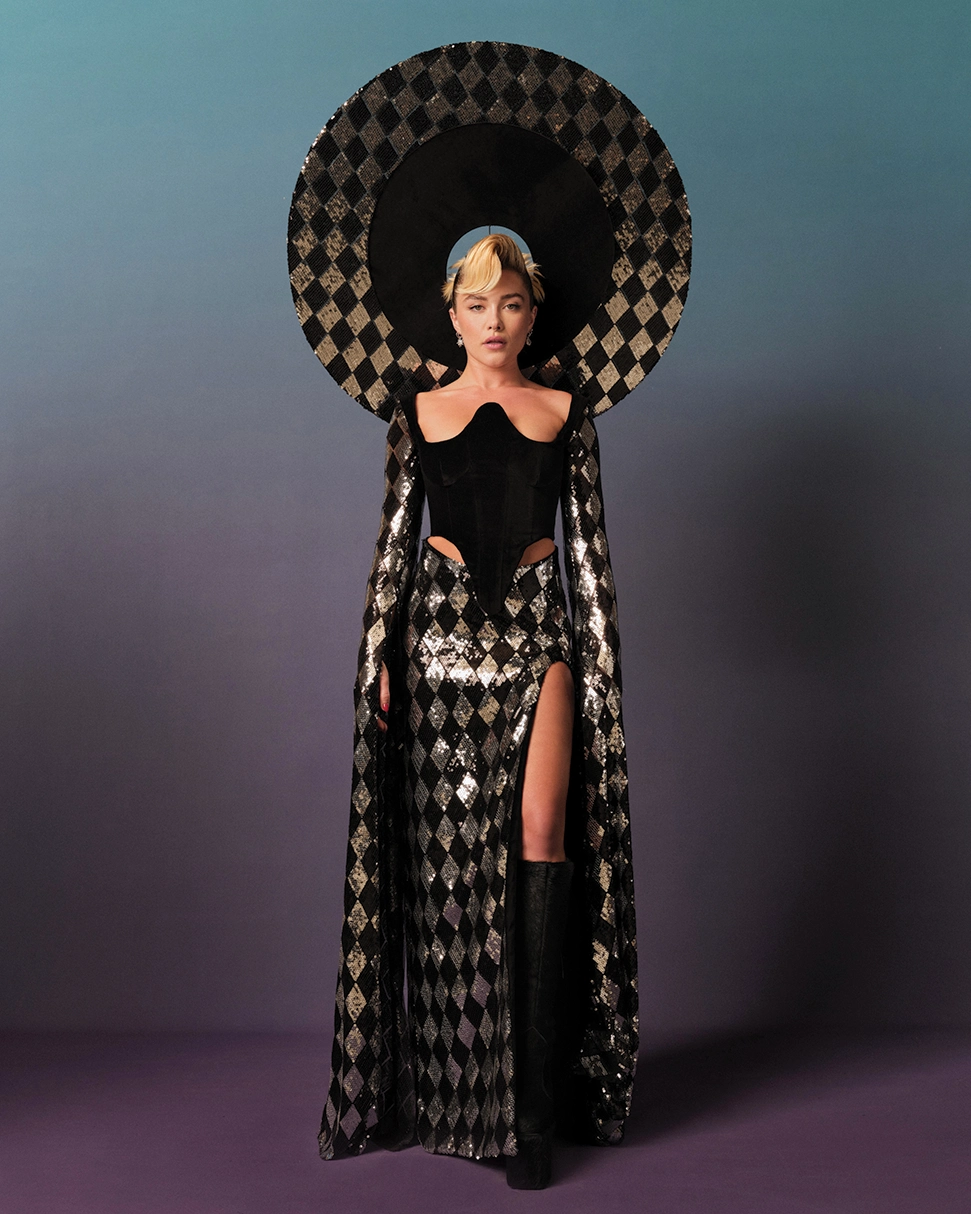 Pin
Pin Despite this meteoric rise Reed, with his otherworldly Botticelli-style waist-length hair and ethereal features, is down-to-earth and warm when he shares his thoughts with me. He lives in his London flat alongside husband Eitan and often posts on his Instagram snapshots of his life and travels, not all glamorous. Reed speaks out about the difficulties of the fashion industry and does not shy away from a hard truth. After his Nina Ricci debut last year he wrote a post with the caption “it’s not easy being the new kid who wants to have fun with fashion, show different bodies and genders and make this little queer dream into a reality.”
Just when you imagine he could achieve no more, he has published his first book, Fluid: A Fashion Revolution, which was created whilst on the move (looking at Reed’s schedule, this is of little surprise). “I’d just got the job at Nina [Ricci], and had so much time on all the Eurostar trains I took between London and Paris [where Ricci is based] that I started voice-noting for a year. This is my life, my experiences, my contextualisation of fluidity right now…” he explains.
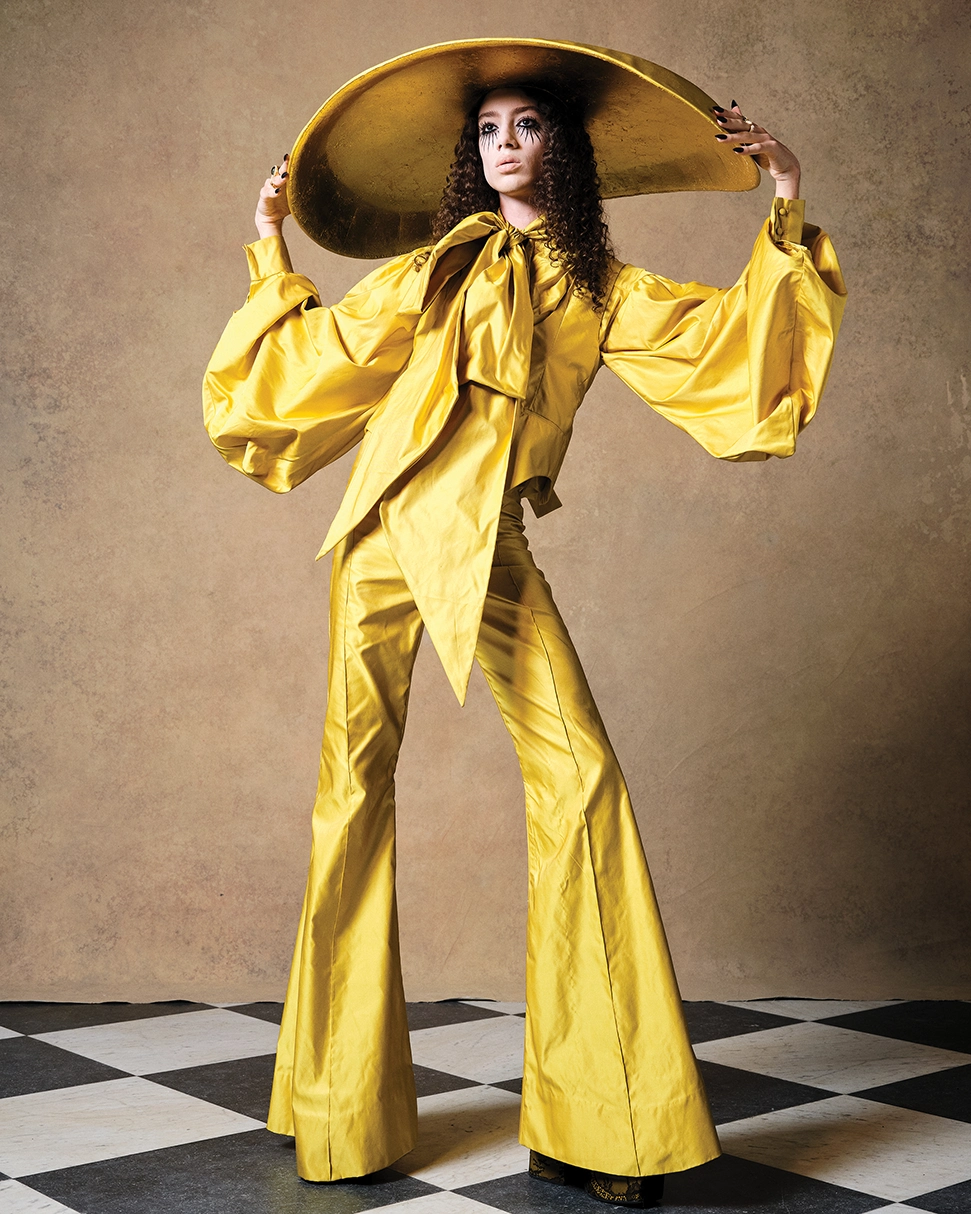 Pin
Pin The book is part autobiography, part fashion archive, part activist manifesto. When I tell this to Reed he laughs and says “that’s so sweet!” though he has always been clear to stipulate that he didn’t invent the term fluid. “Once I said that word out loud, everything I was doing, everything I stood for, and everything I wanted to put out in the world merged into one ideal,” he writes in the book. “I woke up at 5am one morning and changed my Instagram bio to ‘fighting for the beauty of fluidity’. This was my calling!”
And his book does just that – it fights all constraints, in the most Reed-like, aesthetically-pleasing way. Within each chapter he bares his soul open to the world, revealing traumas of childhood but also his trajectory to the top of the industry. Add in beautiful imagery of his vast body of work, and photographs of his celebrity cult-following and clientele dressed in his fantastical creations, and it makes for compelling reading.
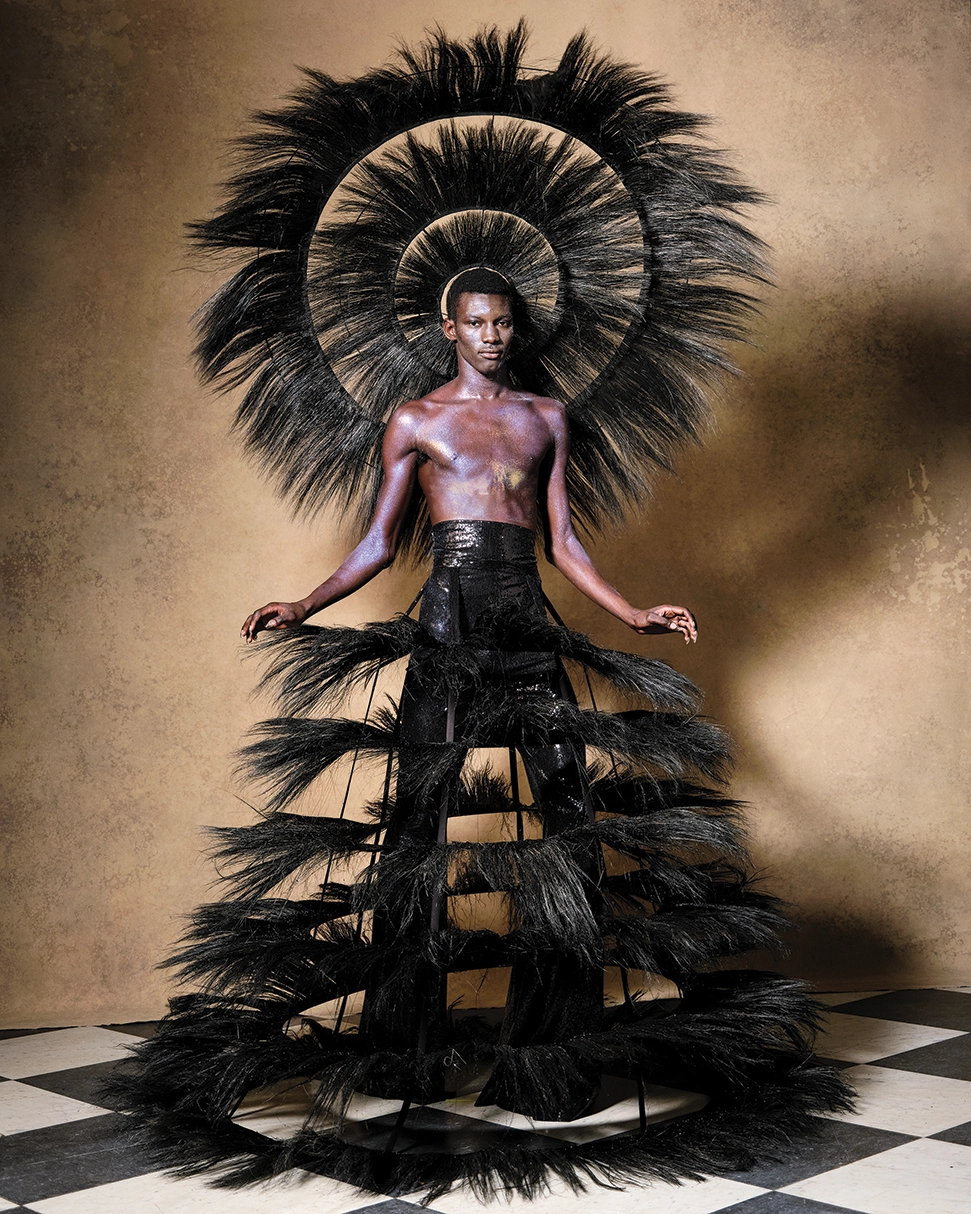 Pin
Pin Reed first encountered society’s need to pigeon-hole gender when he was very young, growing up in America. “Being in the playground and just seeing how split and gendered everything was in this ridiculously classic sense of boys in the sandbox and girls playing double dutch or jump rope, I just remember really not feeling like I fitted into any space,” he tells me. “I had this feeling of not belonging. I did not identify with being a boy or a girl.”
Unfortunately for Reed, he did not get to choose how he defined himself at that age, someone else decided to do that for him. Reed was outed, with a teacher telling his parents “gays go to hell”. His American model-turned-candlemaker mother Lynette and Oscar-winning, British documentary film producer father Nicholas, however, were instrumental in giving him the freedom and the space to reclaim himself and explore his identity, their liberal mindedness having a great bearing on his childhood and his future.
Harris Reed
In the book he shares an anecdote of how, aged just nine, clothes shopping was already a challenge, until his mother stepped in. “My mom took me to the preteen department for girls, which is where my eyes sparkled at what I saw, and I felt for the first time that I was starting to find my fashion salvation,” he writes. “The jeans were accented with rhinestones, and the trousers were boot cut and flared. Nothing about this felt boyish. Many shirts were made from flowy chiffon, which both felt and looked freeing and limitless – there was an appeal to this freedom. Discovering that world opened the door to an evolution and exploration into myself that ultimately illuminated who I am. It might sound crazy, but a blouse can sometimes do that.”
In 2015 Reed relocated to London to study fashion at CSM; it was a pivotal decision. “Confusion over who I was and my fears of being accepted remained through my teen years as I embarked on this identity renaissance… The breakthrough came when I moved to London,” he says in Fluid. Within his first few days of living in the capital he recalls seeing a man at Liverpool Street station in a wedding dress, platform boots and with full-face makeup and a beard. The man passed another dressed in full suit-and-tie business attire, and yet neither batted an eye. It was for Reed a sliding doors scenario. “All in that one moment, I felt like I was living in the future. For the first time, I felt a world of new possibilities, where being different was possible, achievable, and even acceptable.”
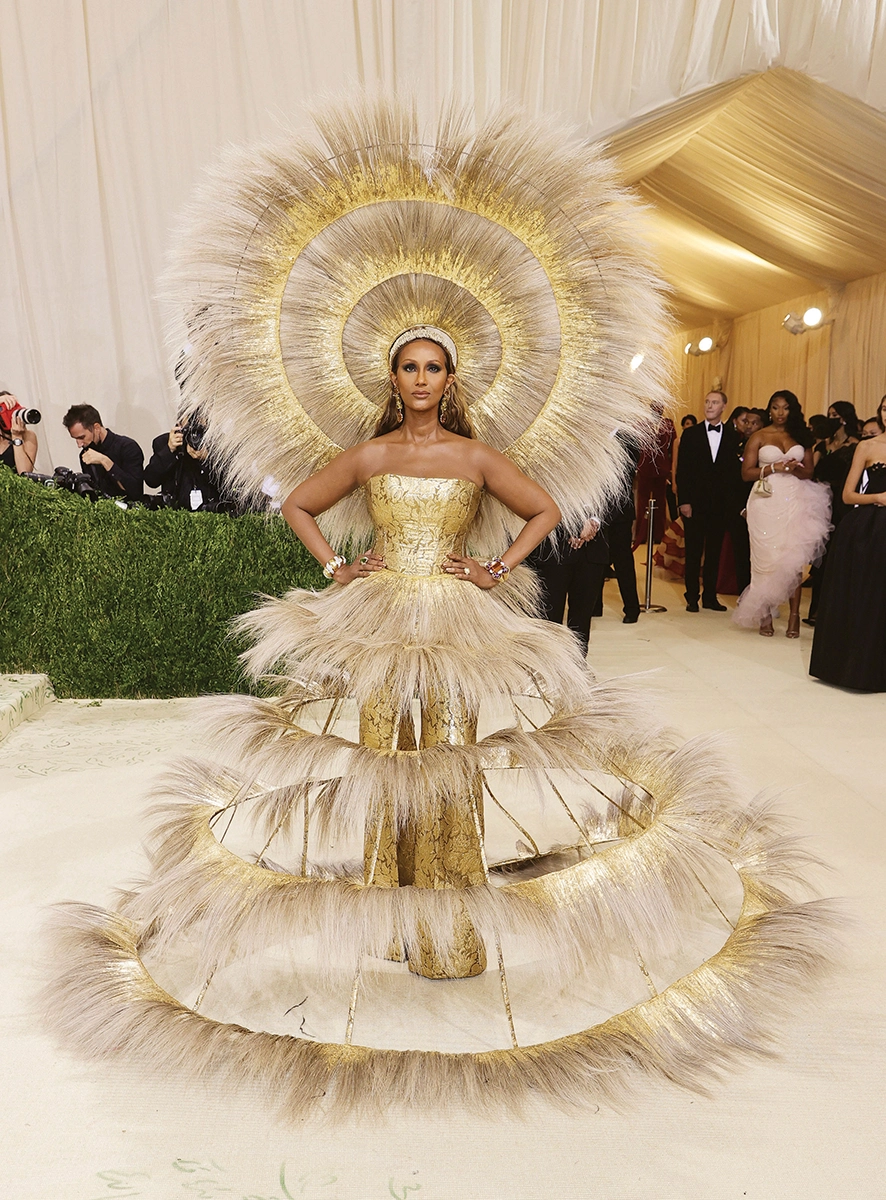 Pin
Pin 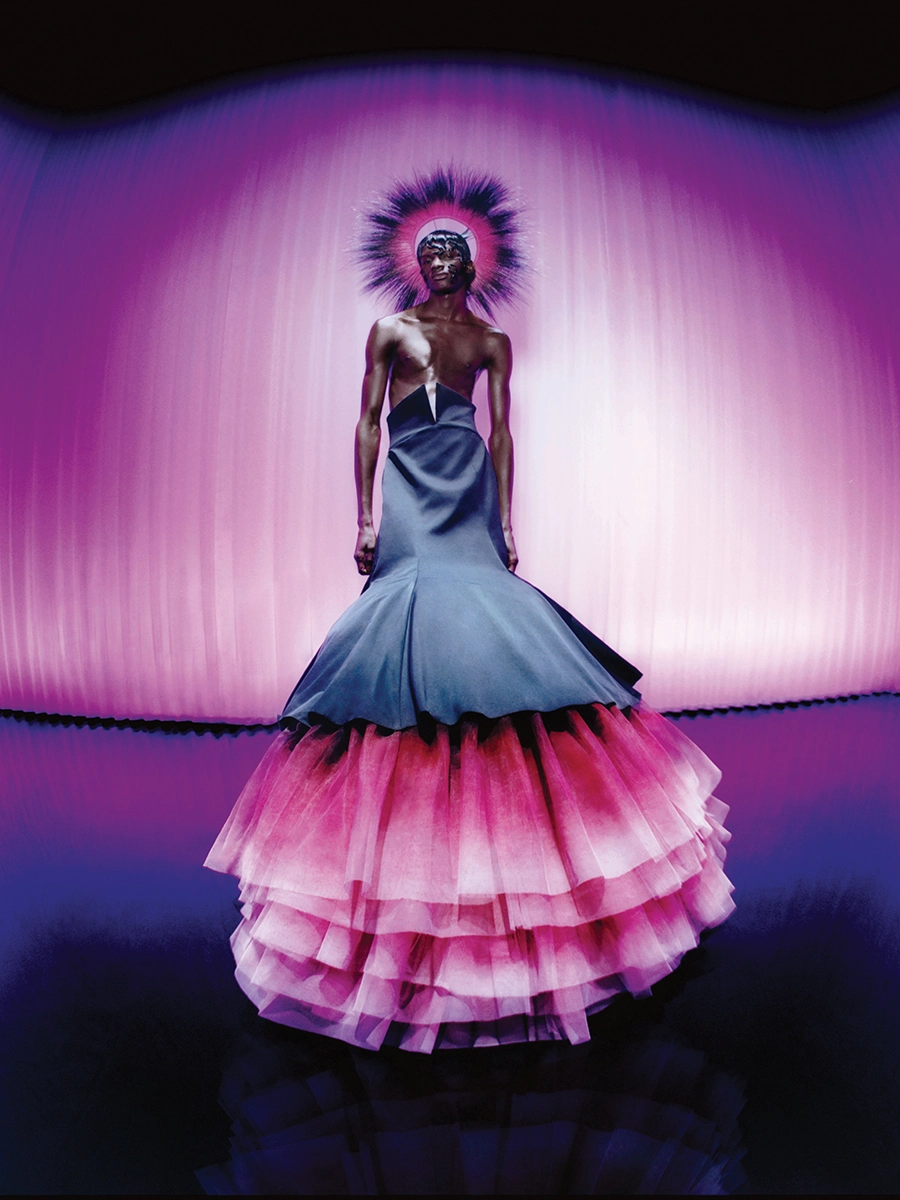 Pin
Pin In his early days at CSM, Reed began mixing with the capital’s diverse, queer community, going to Charles Jeffrey’s Loverboy club nights in Dalston and the Queen Adelaide pub in Bethnal Green. It was a turning point within his design journey, as he recognised the transformational powers of dress, realising that he wanted to create clothing he himself wanted to wear. “Fashion is a perfect medium for fluidity. The clothes we wear signal who we are to the world – whether we want to dazzle or just blend in,” he says in Fluid. Outfits in his first student collection included black matador pants with a black lace ruffle shirt; and bright pink metallic pants and a matching top with detachable sleeves. “These were inspired by a story I imagined about an 18th-century aristocratic boy who had been thrown out of his home because he was gay and now lived backstage in the Royal Opera House, where he played dress-up with costumes – something of a metaphor for my own story, if you will.”
Reed’s designs are about challenging the status quo. “To be unapologetically ourselves, sometimes we need to rewrite a few of the rules or just burn them to the ground, tough as that may be,” he writes in the book. “I want my designs to create a sense of identity, and to offer confidence, to showcase the wearer’s true self … I want people to see my designs and think, ‘Wow, holy shit, this is really interesting!’ or ‘That is insane! Who would wear this?!’ This friction, these conversations, this exposure – all of it furthers the fluidity movement.” Even now, he tells me, if he’s feeling vulnerable, he’ll “go on a night out in taller shoes, a bigger hat, a more dramatic skirt. It’s about pushing your limits.”
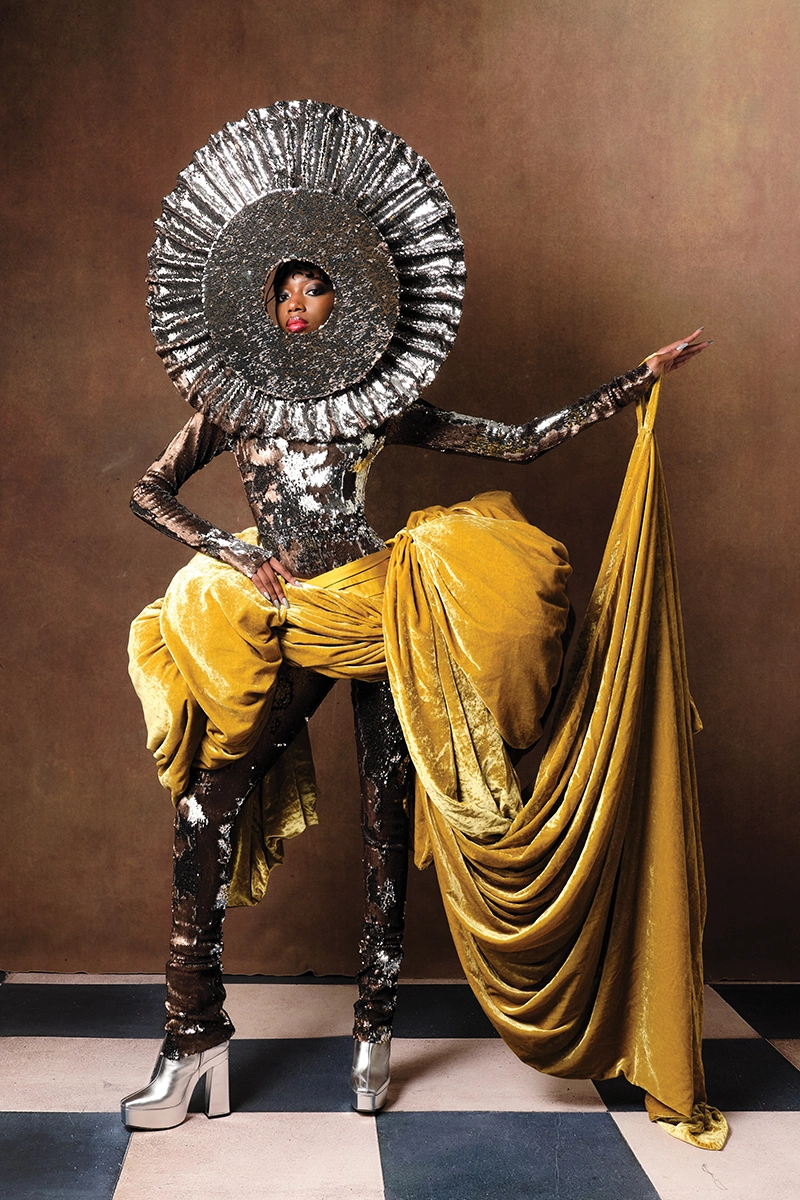 Pin
Pin 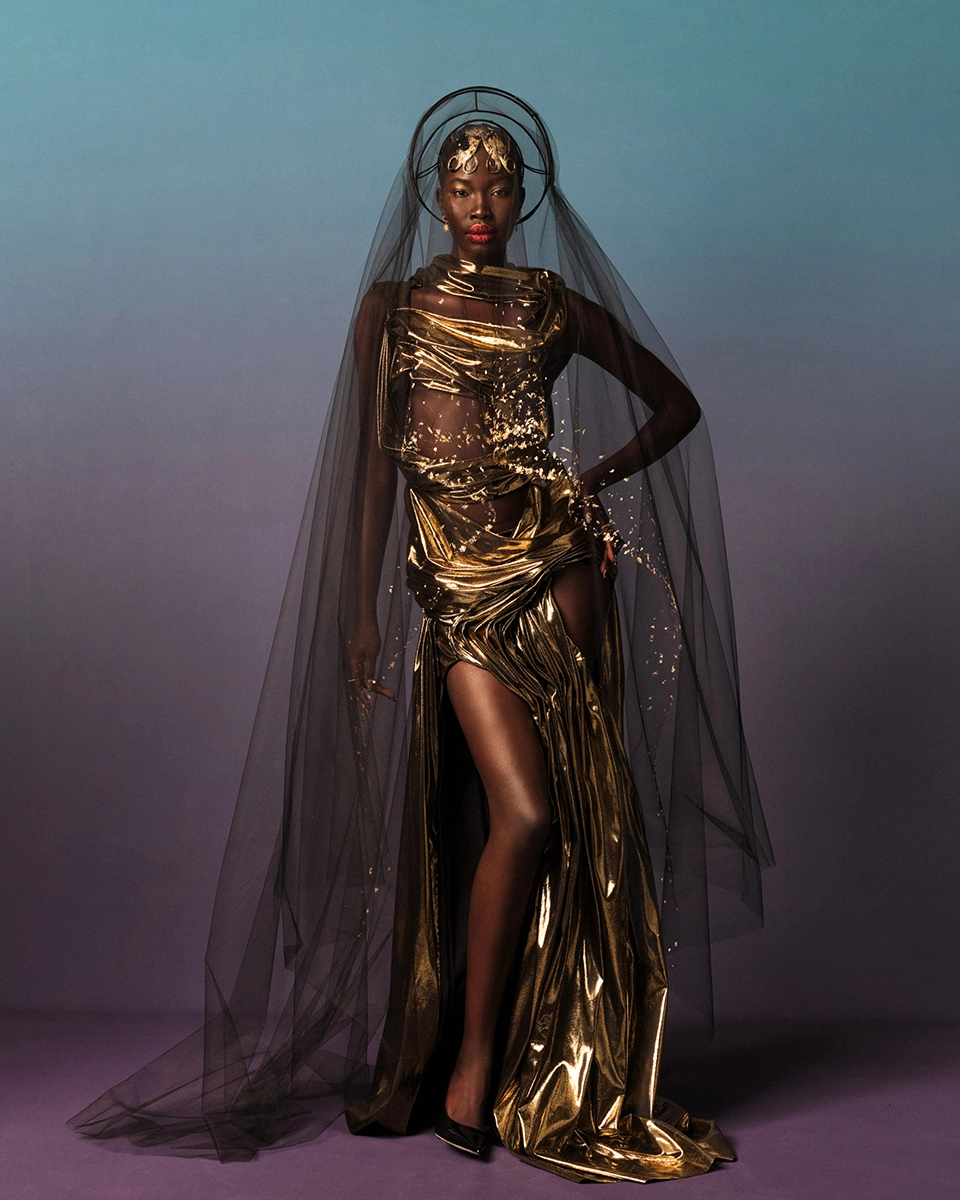 Pin
Pin Reed is not afraid to push a few buttons, too. In 2020 he made headline news when Styles wore a dress on the cover of US Vogue’s December issue. Inside the magazine, the shoot featured Styles in one of Reed’s designs – a tailored suit with peak shoulders attached to a hoop-skirt draped in tulle. Within hours of the magazine’s publication, it had become a symbol that far transcended the sum of its parts. For some, it symbolised a referendum on outdated gender-norms. For those attached to the binary, it was a sign of how far things had gone. Candace Owens, a US Republican party member, tweeted to “bring back manly men”. Reed’s clothing and stylistic decisions had the world talking across every social media platform imaginable, but for the designer it was simply about great clothes and having fun. “Why is everyone so obsessed with a man in a dress?” was his response.
I am intrigued to know Reed’s thoughts on the current state of fluidity, which still feels incredibly misunderstood, even in 2024. Reed’s reply to my question is simple and swift – it feels that way because it is. “It’s such a personal and beautiful experience that I think that it completely gets misunderstood. I think a lot of people find that if you’re fluid, you’re just dead in the middle. You’re somehow half boy, half girl, they have this very kind of Neanderthal approach. The whole beauty about fluidity is that it breaks down all boundaries. It breaks down and shatters any walls. It is something that is completely about what it is to the individual, not about what society thinks that their fluidity is.”
Harris Reed
Reed is an activist in more ways than one and he feels a deep sense of responsibility towards the environment. Fluidity is, he opines in Fluid, “about caring, caring about the true you, caring about others, and caring about the world we live in. That’s a big statement, but one I try to embody.” Reed’s newer collections contain deadstock fabrics and upcycled and locally sourced materials where possible, though he has admitted it can be challenging as many of these materials are cotton or hemp, which don’t fit into the grandeur of his designs.
He also supports initiatives such as Second Hand September. For his AW22 collection, Found, shown at the Serpentine Pavilion, we saw ten looks come down the salon-style catwalk, all of which were created with clothes that had been donated to Oxfam, making an important point about fashion waste. Reed played with a consortium of extravagant fabrics, undid seams and meticulously reconstructed garments, giving them all new life with his signature flair; he even repurposed lace bridal veils and morning jackets.
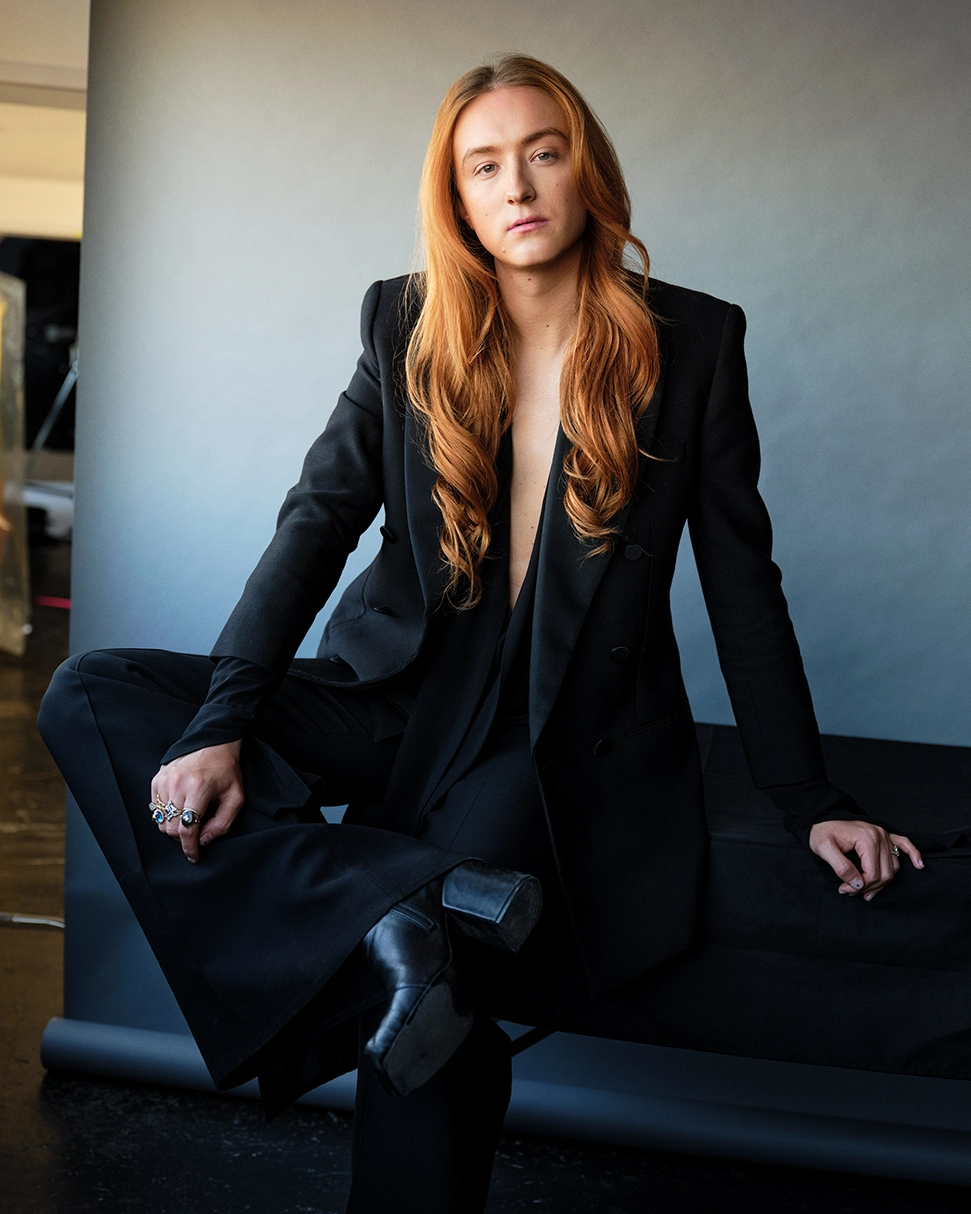 Pin
Pin Is this to be the future of fashion I ask. “Vintage and upcycling is going to become huge because fashion is also expensive; it’s not the most accessible to people and that’s not okay,” he says. “Just look at Vestiaire and Depop having some of the best years they’ve ever had financially, it’s clear this resale culture is only becoming stronger. And other ‘demi-couture’ brands like myself will hopefully continue to grow alongside this because we’re offering special pieces for individuals using sustainable fabrics. And for me that really feels like the future.”
For Reed it is clearly imperative brands think about their actions and “be responsible and ethical in the way they make their clothes, source their fabrics. Clothing should be something that’s art and is passed down and stays around for a long time, it shouldn’t be a high street blouse that just gets thrown in landfill.”
Harris Reed
Before he goes, I ask about his advice for young designers trying to break into the industry today. “There has to be a strong, genuine narrative to everything that you’re doing. You can no longer put out a flashy sparkly dress without it having a story. Do everything with meaning, relate it to yourself personally, pull from your insecurities, pull from your trigger points and create beauty from that.”
As for Reed, what would he like to be remembered for? “My superpower is the clothes that I make. That is my activism,” he tells me. And with that, is it time for him to depart. All I can do is wait with bated breath to see what Harris Reed does next.
‘Fluid: A Fashion Revolution’ by Harris Reed (Quadrille, £35); harrisreed.com
